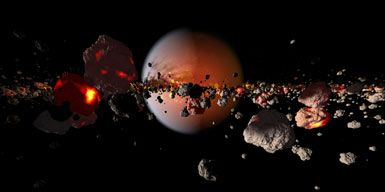Narrated by Robert Redford
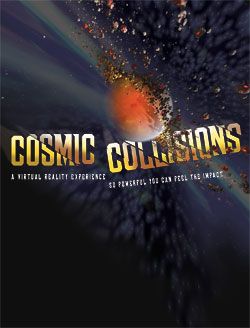
Cosmic Collisions
From subatomic particles to the largest galaxies, cosmic collisions are a universal force of nature. Creative and also destructive, dynamic and dazzling, collisions have resulted in many things we take for granted – the luminescent Moon, the Sun’s warmth and light, our changing seasons, waves washing up on a sandy shore, They’ve ended the Age of Dinosaurs and changed the very map of the cosmos, reforming galaxies and giving birth to new stars and new worlds. Cosmic Collisions, the third Space Show produced by the American Museum of Natural History, provides an unprecedented and extraordinary view of these events – both catastrophic and constructive – that have shaped out world and our universe.
Cosmic Collisions was developed by the American Museum of Natural History, New York, in collaboration with the Denver Museum of Nature & Science; GOTO, Inc., Tokyo, Japan; and the Shanghai Science and Technology Museum, China.
Cosmic Collisions was developed by the American Museum of Natural History with the major support and partnership of National Aeronautics and Space Administration, Science Missions Directorate, Heliophysics Division.
One World One Sky: Big Bird's Adventure
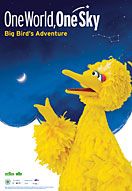
Explore the night sky with your favorite friends from Sesame Street in One World, One Sky: Big Bird's Adventure. Follow along with Big Bird, Elmo and their friend from China, Hu Hu Zhu, as they take you on a journey of discovery to learn about the Big Dipper, the North Star, the Sun and the Moon. Running time, 25 minutes.
One World, One Sky: Big Bird's Adventure was created as part of a global partnership between the Adler Planetarium; Sesame Workshop, the nonprofit educational organization behind Sesame Street; the Beijing Planetarium; and the Liberty Science Center (Jersey City, NJ).
Solar System Tour - Space Lab

Space Labs - Live Astronomy Programs
Our educator led, full-dome programs utilize Uniview, a visualization and simulation software aimed at presenting and teaching astronomy, astrophysics and earth sciences. Our full dome theater is a large-scale immersive environment, featuring realtime digital planetarium, and large-format cinema.
Solar System Tour
Our Solar System has everything you could want! Planets! Moons! Asteroids! And Comets! All swirling around our one and only star, the Sun. Visitors will learn all the different objects that populate the Solar System and feel the force that keeps worlds spinning.
Current Night Sky - Space Lab

Our live full dome programs utilize Uniview, a visualization and simulation software aimed at presenting and teaching astronomy, astrophysics and earth sciences. Our full dome theater is a large-scale immersive environment, featuring realtime digital planetarium, and large-format cinema.
Current Night Sky
Long before television, GPS and street lights, there were the stars of the night sky. Visitors will travel through the seasonal night sky to learn about constellations, hear mythical stories and observe the magnificent Long Island sky.
Dream Big: Engineering Our World
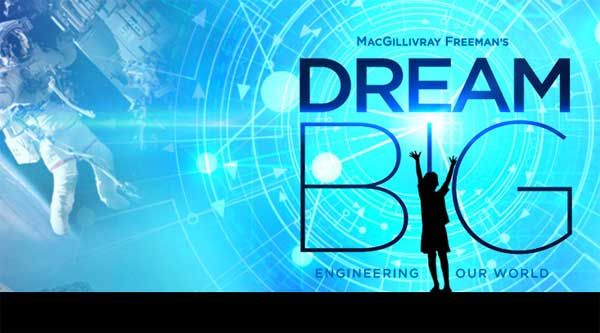
Dream Big is a HUGE film - LITERALLY
Narrated by Academy Award® winner Jeff Bridges, Dream Big: Engineering Our World is a first of its kind film for giant screen theatres that will transform how we think about engineering. From the Great Wall of China and the world’s tallest buildings, to underwater robots, solar cars and smart, sustainable cities, Dream Big celebrates the human ingenuity behind engineering marvels big and small, and reveals the heart that drives engineers to create better lives for people around the world.
Mysteries of the Unseen World
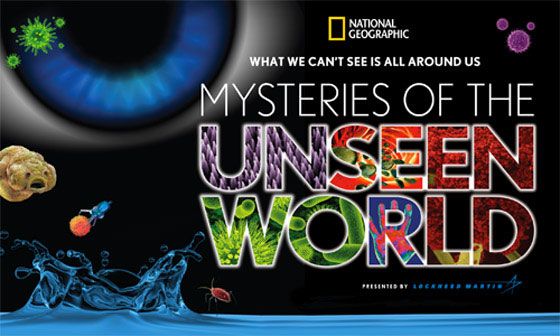
MYSTERIES OF THE UNSEEN WORLD will transport audiences to places on this planet that they have never been before, to see things that are beyond their normal vision, yet literally right in front of their eyes.
Mysteries of the Unseen World will reveal phenomena that can't be seen with the naked eye, taking audiences into earthly worlds secreted away in different dimensions of time and scale.
Viewers will experience events that unfold too slowly for human perception; they will "see" the beauty, drama, and even humor of phenomena of that occur in the flash of a microsecond; they will enter the microscopic world that was once reserved only for scientists, but that Mysteries of the Unseen World makes accessible to the rest of us; they will begin to understand that what we actually see is only a fraction of what there is TO see on this Earth.
High-speed and time-lapse photography, electron microscopy, and nanotechnology are just a few of the advancements in science that now allow us to see a whole new universe of things, events, creatures, and processes we never even knew existed and now give us new "super powers" to see beyond what is in front of us.
Visually stunning and rooted in cutting-edge research, Mysteries of the Unseen World will leave audiences in complete thrall as they begin to understand the enormity of the world they can't see, a world that exists in the air they breathe, on their own bodies, and in all of the events that occur around them minute-by-minute, and nanosecond-by-nanosecond. And with this understanding comes a new appreciation of the wonder and possibilities of science.
Journey to Space

“We began as wanderers, and are wanderers still”
~ Carl Sagan
In the past half century, humans have punched through the stratosphere, walked on the moon, and lived continuously in orbit. In the coming decades, our unquenchable curiosity will take our species beyond the cradle of Earth to touch the face of another world. Strap in for the next giant leap. Next stop … Mars! Narrated by Patrick Stewart.
NASA’s next era will be its greatest yet. That is the clear “roadmap” painted by Journey To Space. The film absolutely annihilates the perception that the space program died with the end of the Space Shuttle Program by showcasing the exciting plans NASA and the space community are working on, and the challenges they must overcome to carry out audacious missions such as landing astronauts on Mars and capturing asteroids.
By using extensive interviews with astronauts Chris Ferguson (Commander of the final shuttle mission) and Serena Aunon (a new astronaut chosen for future flights), as well as a brilliant narration by film and television legend Sir Patrick Stewart, Journey To Space gives a sweeping overview of past space accomplishments, current activities and future plans.
Journey To Space puts into historical context the magnificent contributions made by the Space Shuttle program and its intrepid space pioneers. It uses the most spectacular space footage – including unique views of Earth and operations in space – such as deploying and repairing the Hubble Space Telescope. It then goes on to show how the Shuttle launched and assembled the International Space Station (ISS). Together, these programs have taught us how to live, build and conduct science in space. The ISS will continue operating in space until 2024, and the film shows how it is building a foundation for the next giant leaps into space.
The film concludes with a fascinating, realistic scenario of how astronauts will actually get to Mars, live there for long duration, and then return home after a two-and-a-half-year mission. This includes the new icons of the next chapter of space exploration:
Orion is NASA’s first spacecraft designed to carry humans on long-duration deep space exploration missions throughout the solar system.
Olympus, an inflatable transportation habitat, is an early concept 45- or 50-feet diameter module that would provide astronauts the work area and living space necessary for long-duration missions. Smaller versions have already flown in space, and a full-scale version is shown undergoing ground testing.
The Space Launch System (SLS), a new giant rocket, will carry spacecraft, Mars landers and ascent vehicles to place astronauts on the surface of Mars. SLS will generate over nine million pounds of thrust and will launch hardware into orbit equivalent to the weight of 22 elephants.
Journey to Space will both inspire a new generation of young people to dream of new horizons in space, and engender a new appreciation for the accomplishments of the Space Shuttle Program among an older generation who came to take it for granted.
Coral Reef Adventure
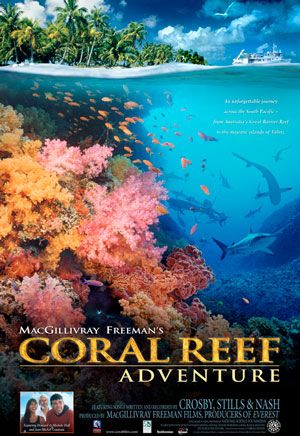
Take a once in a lifetime journey across the South Pacific for a spectacular giant screen adventure. Joy, ecstasy, a spiritual high: these words describe the exhilaration of diving a pristine coral reef, and ocean explorers Howard and Michele Hall bring their love of the ocean into action. With Jean-Michael Cousteau, deep reef scientist Richard Pyle and Fijian diver Rusi Vulakoro, they explore and capture on film the dazzling underwater world of coral reefs, magical places here on Earth. This tropical excursion through the South Pacific will surprise and delight you as you fall in love with the reefs, and your heart will ache at the tragic, irretrievable loss of these fragile worlds.
Director Greg MacGillivray, a documentary filmmaker whose specialty is the natural world, turns his camera on the South Pacific's beautiful but potentially endangered coral reefs. Backed by narration from Liam Neeson and music by Crosby, Stills and Nash, MacGillivray's film focuses on the the underwater work of a husband-and-wife duo. As they survey the waters near Australia, Tahiti and Fiji, Howard and Michele Hall explain what must be done to preserve the reefs.

